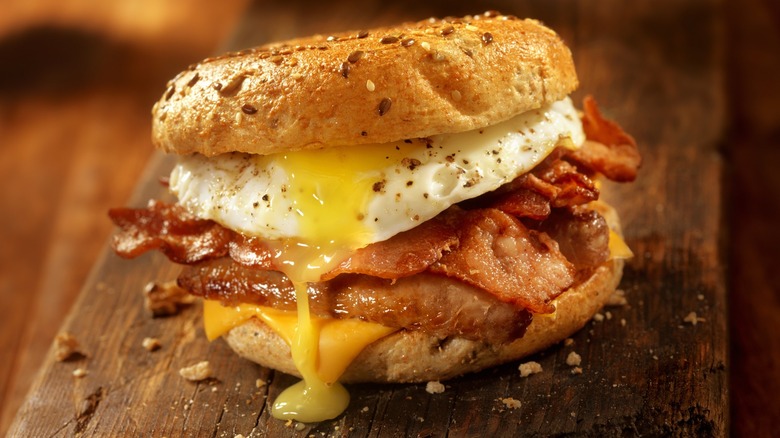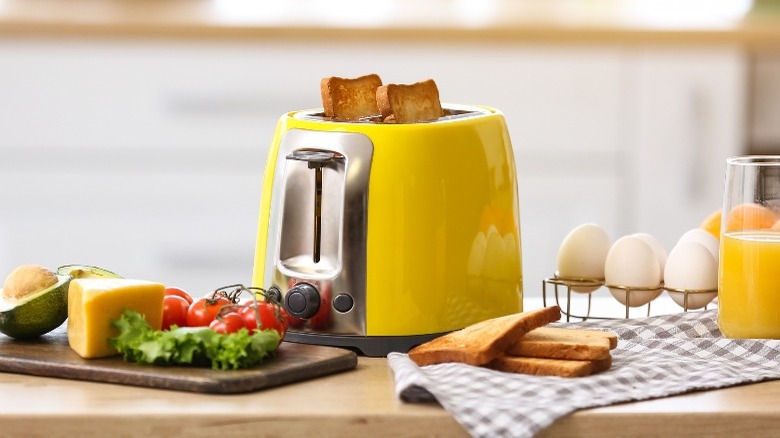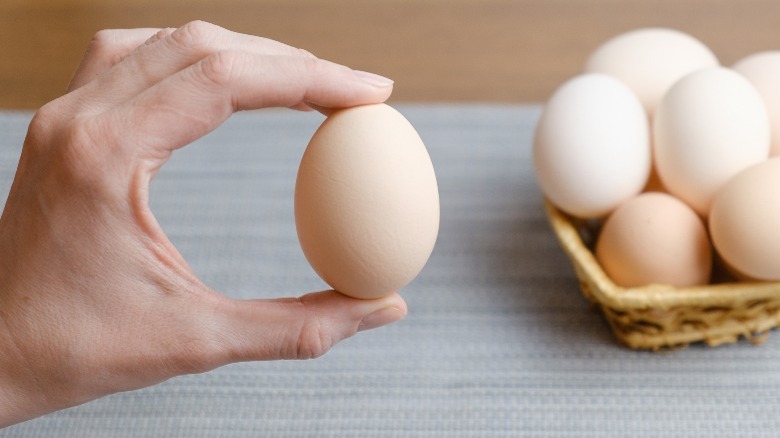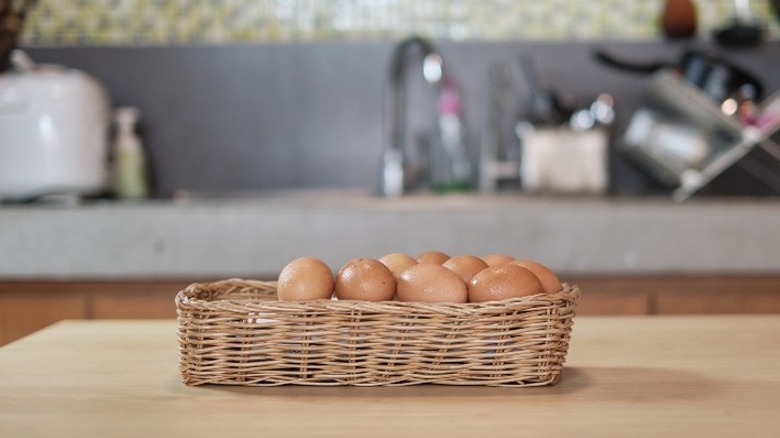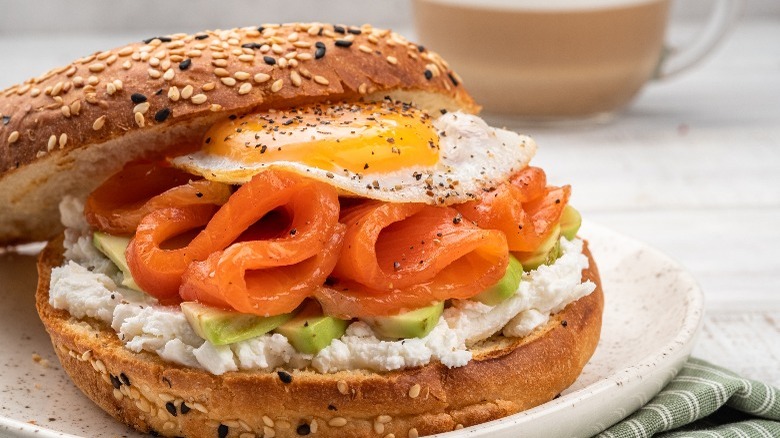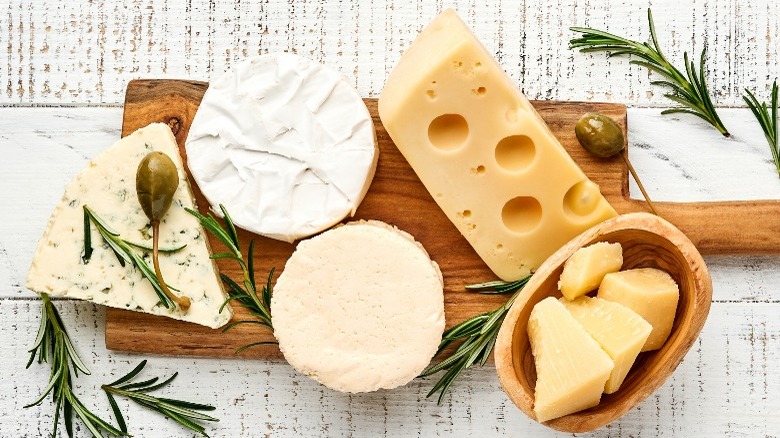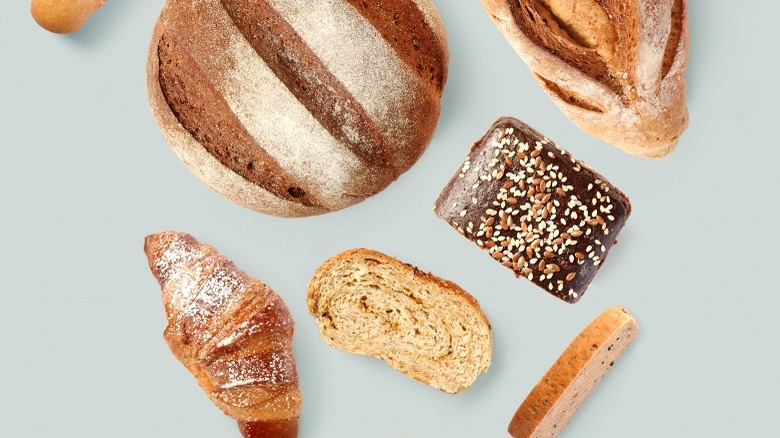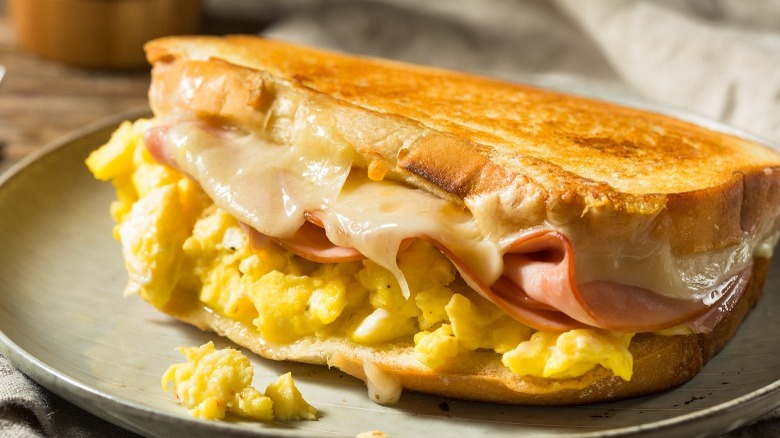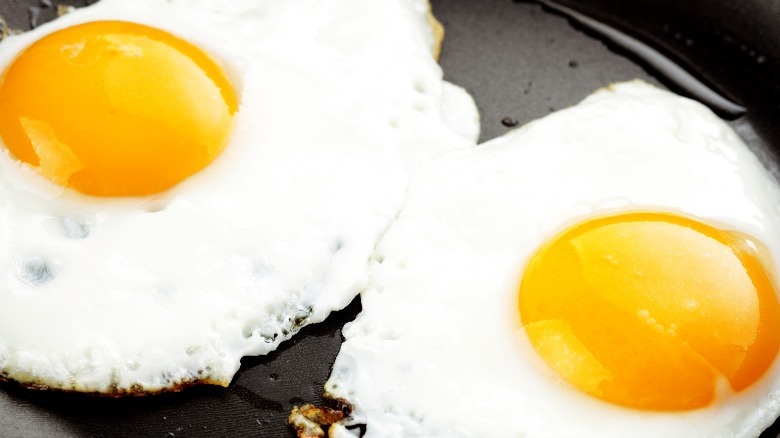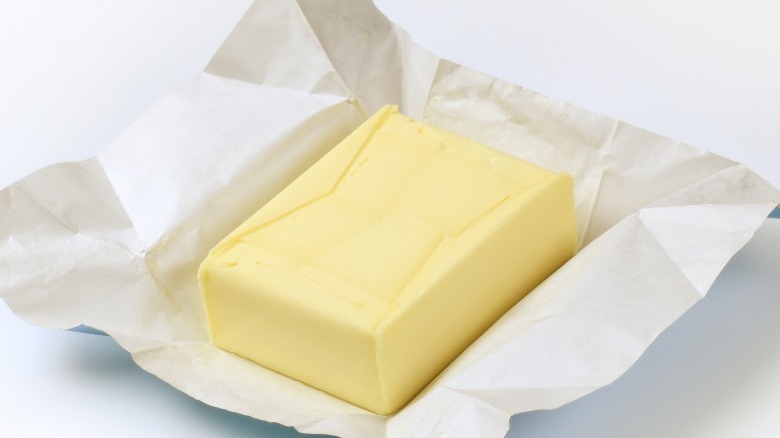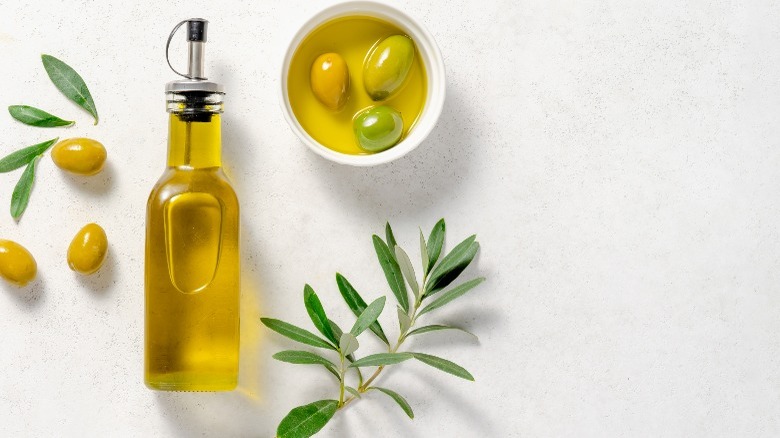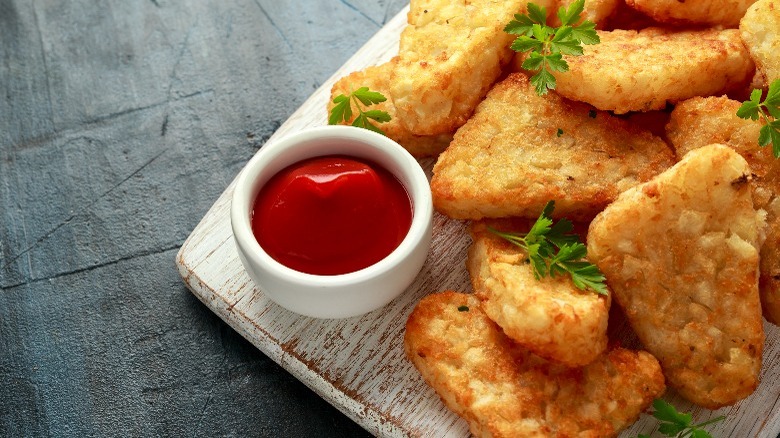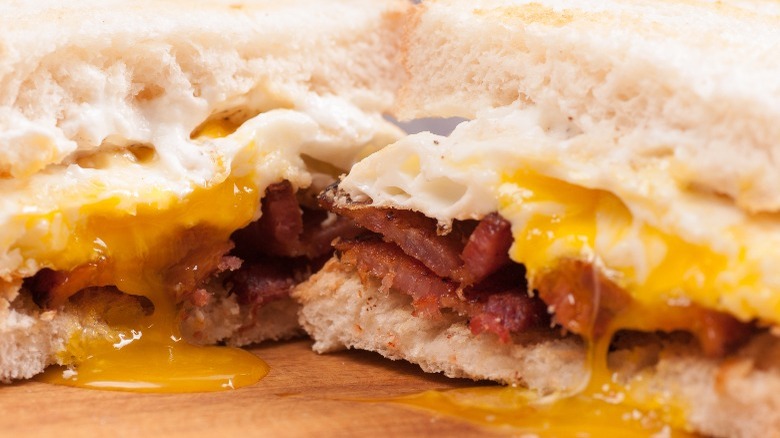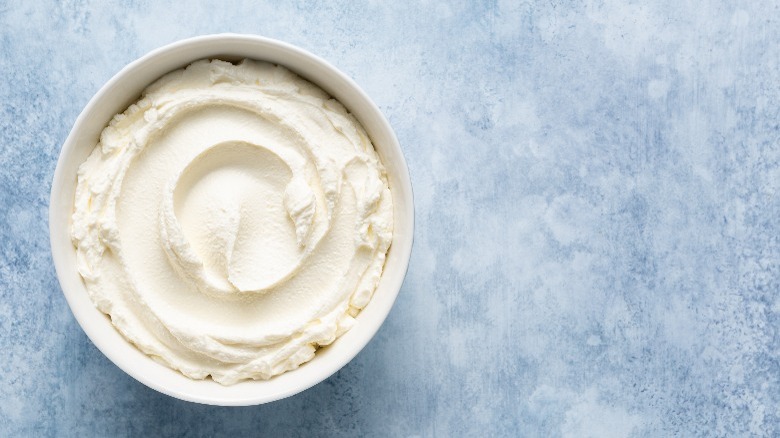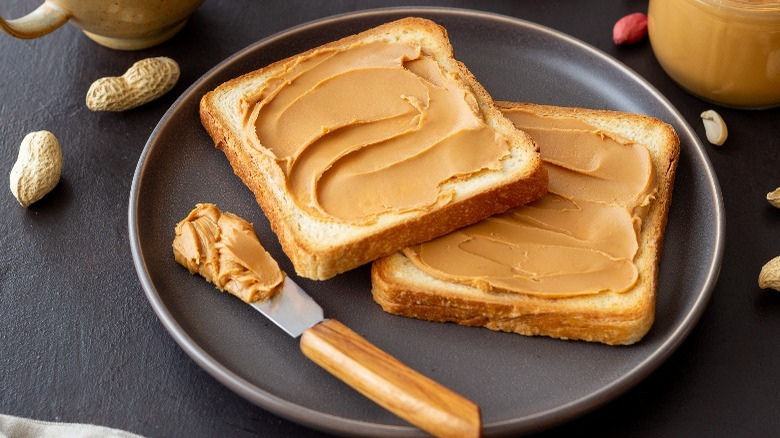15 Tips You Need When Making Fried Egg Sandwiches
When fried egg sandwiches are made just right, you know it with every yolky bite. The bread is toasted or grilled to perfection, and your cheese selection is spot on and melted enough to create an Insta-worthy cheese pull. You know you have accomplished perfection when your buttery fried egg boasts a thick runny yolk giving your sandwich a naturally rich sauce.
Egg sandwiches have been a breakfast staple in diners and homes across America and beyond. But you can't ignore that this satiating sandwich comes in clutch when you're craving breakfast for dinner too.
You might think a breakfast sandwich is easy to assemble, but you'd be surprised how much detail you can pack into this toasty treat. It's easy to botch the sandwich, but even easier to miss out on flawless flavor if you forget small details. If you are ready to crack down on delicious details, enjoy these tips for making the best possible fried egg sandwich.
1. Have everything ready to go before you start cracking
There is a secret rule in well-managed kitchens that most home chefs should be aware of, and it is all about having your things in order before starting a recipe. Mise en place is a prep step that makes a good home chef. The term is French for "putting in place" and essentially means to prepare ingredients and have your tools ready to go before cooking.
Have you ever decided to cook up a meal, then a little way into your cooking, you realize you need something? You have something cooking on the stove while rummaging through the fridge for your needed ingredient. Before you know it, your stovetop is smoking, and you find yourself peering at a mess of burnt food. It's an awful experience, and exactly why mise en place is so important.
It's vital when making something as simple as a fried egg sandwich. You want your toast freshly warm out of the toaster, eggs brought to room temperature, and all your ingredients hot and ready to use when it's time to start stacking that sandwich.
First, ensure your bread is sliced and ready to go in the toaster but don't send them down until you add butter to your pan. Your cheese, meat selection, eggs, butter, and tools (like your spatula and skillet) better be ready too.
2. Quality eggs offer superior flavor
While perusing the egg section, you have likely noticed the wide variety of options. Plenty of egg options exist, from free-range to cageless to small and jumbo-sized. But how do you know which are the best, and is paying more for quality eggs necessary?
Many tips are available to help you choose the highest quality eggs, and taking the time to shop for the perfect dozen will make a huge difference in flavor. How the chickens are raised, how the eggs are cleaned, and where you buy them make all the difference.
For the highest quality, it is recommended you purchase them directly from a farm. You'll notice a difference when you crack them open, and especially when you take a bite. Chickens that can roam around and flap their wings will produce tastier eggs. Chickens that live in a cage their entire lives won't. It's as simple as that.
When you purchase your dozen, consider buying from a local farm — or at the very least, search for a AA grade stamp and something that says pasture-raised on the carton. You'll be supporting farms that raise chickens with care while also ensuring your eggs are richer.
3. Bring your eggs to room temp
If you have ever made a sweet cake from scratch, there is a good chance your recipe called for room-temperature eggs. But why does temperature matter so much? When baking, ingredients blend better when they are a bit warmer. The batter must be smooth and uniform, and using cold eggs can create a chunkier consistency, which won't lend well to your finished product.
When it comes to frying eggs, the same rule applies —and again, it is all about uniformity and results. When you use a cold egg, you risk cooking faster on the outside and slower on the inside. Unevenly cooked eggs are only one issue. If you plan to make scrambled eggs, you'll notice cold eggs don't mix well because they hold their structure better than room temp eggs. Warmer eggs will result in a more uniform mixture and create fluffier scrambles.
Bringing your eggs to room temperature can take up to two hours, depending on how warm your kitchen is. If you forget this crucial step, there is a way to bring your eggs to room temperature, too. Simply add your eggs to a warm bowl of water for about five minutes then get to cooking.
4. Make way for different proteins
Let's move on to other proteins you can add to your fried egg sandwich. When we think about breakfast stuffers, our minds tend to roam to the classic ingredients like bacon, sausage, and ham. These are proven winners when filling breakfast sandwiches, but sometimes you can get more creative.
If you have a little leftover ribeye from last night's steak dinner, a few thin slices will give your fried egg sandwich a nice uplift. Give it a Philly twist by adding sautéed onions and peppers. Otherwise, try making a breakfast mashup with two of your favorites like a bagel and Lox with an egg in between. Even French Canadian cretons (which is a minced pork pâté) taste fantastic spread over a bagel before adding egg and cheese. Alternatively, a few spoons of crispy corned beef give your breakfast sandwich a massive oomph of flavor.
5. Switch up your cheese selection
When we think of cheese for our fried egg sandwich, most of us immediately go to American cheese or cheddar. But we are here to tell you there are far too many exciting cheese selections to settle on the basics. Sure, cheddar offers a sharp tang that melts beautifully, and American is creamy and so yummy. But, do yourself a favor — expand your cheese-tasting palate every now and then.
Gouda is a great place to start. It's creamy and melts into a lovely gooey texture that pairs nicely on sandwiches with avocado, chives, and bacon. Brie cheese creates an incredibly rich-tasting sandwich, thanks to the butter-soft surface of this cheese type.
For a bit of a bolder take, you can try feta or goat cheese which both boast a tangy appeal. Feta will pair nicely in an egg sandwich that also has sliced tomatoes and spinach in it. Goat cheese will crumble well, but feel free to smear it over your bread.
Selecting from one of the three jack cheese options is always a good pick too. Monterey Jack and Colby-Jack are both mild and taste lovely in a breakfast sandwich, but if you want to start your morning off with a bit of spice, go for Pepper Jack instead.
6. Go bolder than sliced bread and bagels
Just like we suggest you try new protein and cheese selections for your egg sandwiches, we also recommend experimenting with different types of bread. We all know bagels, English muffins, croissants, and regular sliced bread taste lovely; it's why diners and breakfast joints offer them everywhere. But moving forward, you have to try others.
For a lighter take on breakfast, give unleavened bread like flatbread a try. A soft and airy naan tastes fantastic with a fried egg, some avocado, and cheese folded in. If you like combining sweet and salty, try using two French toast slices with a bit of pure maple syrup drizzled over the top.
For a fresh Italian take, consider piling an egg sandwich with tomatoes, chopped chives, and mozzarella between freshly baked focaccia. Ciabatta bread is another Italian bread that makes for a delicious breakfast sandwich. The key is to select bread that is soft enough so that when you take a bite, you won't lose all the insides of your sandwich. Some of the harder bread selections (like French baguettes) sometimes make things a bit more difficult to eat.
7. Grill your bread for a buttery exterior
Playing with flavor is only one element of cooking. If you want to dive deeper into culinary artistry, then texture is equally as important. While your tastebuds are interpreting the taste profile of your meal, your entire mouth is working to discover the characteristics and consistency of your food. The two play hand in hand, and having one off can ruin a meal.
When it comes to breakfast sandwiches, we often place our sliced bread in the toaster to help prepare hot crispy slices. This tried-and-true method gives you a homey, known feel when eaten. If you have a toaster oven at home, consider pre-buttering the bread to permeate the bread with a butter flavor. Place a sheet pan underneath to avoid butter dripping on the hot coils.
Otherwise, try buttering your bread and grilling it in the pan like a grilled cheese sandwich. Not only will this help melt the cheese, but you'll love the ultra-buttery flare that comes with each bite. You can take your grilling madness one step further, too, using a savvy trick. Keep reading.
8. Avoid soggy bread with this trick
You already know grilling your bread provides a slightly crispy exterior that boasts a nice buttery touch, but what about the inside of the bread? You know, that one that never reaches a toaster or the hot metal base of your frying pan. Because that soft slice doesn't have anything to protect its springy-soft texture, it is prone to sogginess.
Consider the leftover butter from your fried egg, greasy bacon or sausage, and smeared ketchup added between the layers. You're looking at a soggy sandwich. Yuck. There are a few ways to avoid this problem, and the most obvious is to sit down and eat it immediately. But if you take your breakfast to go, perhaps you can try this Reddit hack instead.
You only need a little help from a sprinkle (or two) of shredded cheese to avoid this breakfast disaster. After adding a bit of butter to your slices, place some shredded cheddar over the piece and grill it as you normally would. The cheese will adhere to the bread and create a crust, which acts as a barrier preventing sogginess. Consider doing this on both sides of your slice to double the deliciousness.
9. Pan size and temperature matter
There are a few details in the egg frying world that often get missed, and two of the most common are all about the skillet you use. First, let's talk about the pan size and the temperature you should strive for.
Typically, you don't want a super hot pan when you make fried eggs (or any egg). Instead, you need time and patience to work on your side. The results are incredible every time, but you won't get those delicious results if you are in a rush.
Add butter or oil to your pan, turn the heat to medium, and crack your eggs. From there, consider adding a cover and letting the heat and accumulated steam do the work. Otherwise, go traditional with a single flip halfway through.
Remember to use the perfect pan size to make the job easier. If you plan on frying one or two eggs, an 8-inch pan should do the trick. Go up to a 12-inch pan if you plan to fry more than that at once.
10. Fry your eggs in butter for best flavor
There is a lot of controversy about frying eggs and whether or not you should use butter or oil for your cooking fat. We declare that butter and oil have pros and cons, and you should decide based on your preference.
Butter will lend you the best flavor, and softest texture of eggs, especially when cooking on a reliable medium heat. When cooking this way, your eggs will effortlessly soak up that luscious buttery flavor and still have the opportunity to crisp up in your pan if that's what you desire.
If you're looking for a healthier option, butter isn't it. Most home chefs choose butter as it adds extra flavor. After trying several methods of cooking fried eggs, Tasting Table staff explained that salted butter added an incredible fragrance, especially when cooked at medium to low heat. If the aroma is that good, you know the flavor is there too.
11. For crispy eggs, use oil
If the most important detail to your morning breakfast is texture, then perhaps oil is your best option. Olive oil has a higher smoke point than butter so you can enjoy the insta-worthy crispy edges by using hot oil. Because it already comes in liquid form, you don't have to wait for it to melt before cracking.
You'll want to crank your heat up for those crispy edges to allow the bottom of your egg to brown up a bit. The oil pooled along the edges of the egg whites will sizzle up just right, creating the brown crisped border you desire.
Plus, you'll explore the grassy flavor notes with olive oil instead of a rich buttery flavor. If you don't desire this flavor, consider using mild or delicately flavored olive oil or vegetable oil.
12. Crunchify your sandwich
There is a hack all breakfast lovers need to know about, and we call it crunchifying your fried egg sandwich. We're not talking about adding an extra crispy layer of bacon or throwing potato chips in. No, we're talking about those satisfyingly crispy hash brown patties!
It's simple: fry them until they reach a gorgeous brown hue, then add them right into your sandwich. This creates an all-in-one breakfast that can be enjoyed at home or on the go — no need to fuss around with a side dish because the entire meal comes as one packaged deal.
All you need is a little ketchup for some dunking action, and you are well on your way to a flavorful, perfectly textured sandwich that stands out amongst the rest. The same hack can be enjoyed by riding through your local Mcdonald's drive-thru, where folks can enjoy a secret menu filled with dreams outside the golden arch originals.
13. Runny yolks are gold
Everyone has a personal preference on how yolks should be cooked — whether eating them with a side of toast and bacon or placed over a few French toast slices with a drizzle of maple syrup. Regarding an egg sandwich, we're pretty specific about those luscious yolks too.
While we think runny yolks are gold, knowing how runny they should be is important. An over-easy yolk might lend to undercooked whites, which is a no-no if you ask us. But over-hard will render hard yolks that don't run at all. We don't condone that either.
You can achieve perfectly runny yolks by frying your eggs over-medium or consider popping the yolks right before flipping the egg. If you take them off the heat quickly, you can ensure the yellow doesn't cook all the way through. Then you can get the best of both worlds — cooked whites and runny yolks. Yum!
14. Tang it up with a schmear of cream cheese
We all love a good bagel with cream cheese. The tangy flavor of the spread goes perfectly over the chewy bread type and makes a filling and delicious breakfast (or lunch). But have you ever tried an egg and cream cheese bagel mashup?
Believe it or not, cream cheese pairs brilliantly with egg sandwiches, especially when a bagel is involved. The idea is to add the cream cheese at least 30 seconds after it comes out of the toaster to ensure it cools down enough to keep the white spread somewhat cold.
Once you add a hot fried egg and a little bacon or sausage, the cream cheese will melt a little more. That's where this delicious sandwich gets wicked messy. Worth the mess, though, if we're being honest. And, if you are wondering whether you should add a slice of regular cheese in as well, of course you should.
15. Give peanut butter a try (we dare you)
If you thought cream cheese sounded a bit daring, we have another unique spread that tastes amazing with egg sandwiches. Trust us when we tell you peanut butter and eggs taste amazing together. Making a plate of scrambled eggs with cheese? Don't forget to add peanut butter to your plate —because there is something special about that nut butter melted over a hot bite of scrambles.
The same goes for egg sandwiches. The salty bacon strips, rich, runny yolks, and melted cheese taste nice, with some sweet peanut butter added to each bite. Perhaps it's the sweet and salty combination that gets us every time.
After constructing your breakfast sandwich, add a smidge of peanut butter on the edge before each bite. Not only will this keep your peanut butter from melting too much, but it gives you the freedom to add as much or little as you want for each bite.
